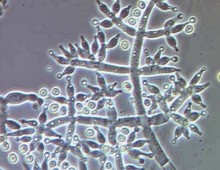On the hunt for industrial enzymes
Researchers mined DOE JGI’s database of fungal genomes for candidate enzymes for use in a variety of industrial processes. The Science By screening genomes of fungi made publicly available by the DOE Joint Genome Institute researchers identified new versions of enzymes called lipases and sterol esterases. To further study the most promising enzymes, they created… [Read More]

